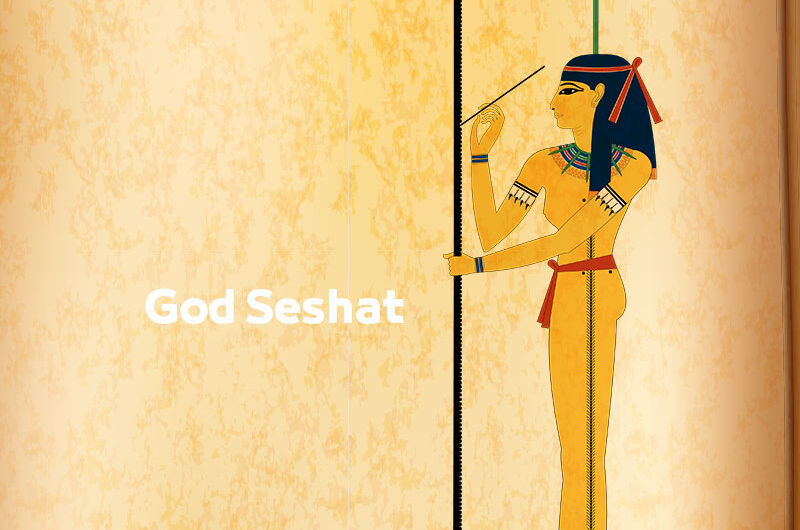God Seshat “Satet, Satit” | Facts Ancient Egyptian Gods and Goddesses | God of the Nile River, hunting, fertility and love in Pharaonic Civilization & Most Important Ancient Egypt Deities, Mythology Symbols, Definition, Temple, Photo and more about Satjet, Satjit…
symbol of the Nile River, hunting, fertility and love among the ancient Egyptians and Pharaohs | Symbol Facts Satis and Satyet, History of Gods, Religious Beliefs in Ancient Egypt, and more.
The god Sat or (Satis) is a female protector deity of southern Egypt and the goddess of the Nile floods, hunting, fertility and love, and one of the three deities that made up the great Elephantine Trinity. The goddess Sat was also called (The Lady of Egypt) and the Lady (Nubia).
Hurghada lovers Offer Luxury Hurghada to Pyramids Tours | El Gouna to Pyramids Tours | Makadi bay to Pyramids Tours | Sahl Hasheesh to Pyramids Tours | Soma bay to Pyramids Tours .
God Seshat
Where did the worship of God Sat originate?
● The worship of God Sat originated in the far south of Egypt in Aswan, as it was the source of the Nile floods, and it was called in the past (Ancient Sonnet).
● The first place for worshiping the goddess Sat and offering offerings to her was a temple on an island called Abu al-Fil, which was named after the elephant that passed through it and caused the floods to occur from the beginning.
● After that, a temple was established for her on the island of Suhail, which became the main temple for the goddess Sat.
● This temple was established in the pre-dynastic era, and it was renovated and expanded several times. During the era of the old dynasty, King Djoser renewed it to offer offerings to the goddess Sat during a period of famine and drought that occurred during his reign, and when he renewed it, the river actually overflowed again. It was also renovated in the Ptolemaic era.
God Seshat
● The goddess Sat is one of the wives of the god Khnum, a god who had guardianship over the source of the Nile River, and was worshiped in the city of Elephantine (which is the number 1 district of Upper Egypt).
● The god Sat was initially a goddess of war, but after she became I, after giving birth to the god Anaqet, she turned into a god of fertility and goodness, so that the goddess Sat with her husband Khnum and her son Anaqet would be the trio of the Nile River, fertility and goodness, called (the Elephantine Trinity).
● Her name means “going forward,” referring to the annual floods of the Nile. The goddess Sat also received many titles, such as: who runs like an arrow, and this symbolizes the speed of the Nile current, and has come to be symbolized by the arrow and the running river.
● God Seshat is also known as the eye of Ra, and that was after her husband, Khnum, was likened to the idol Ra
● The role of the goddess Sat mixed with the role of the goddess Isis, the god Subdit, and the bright star god Sirius, whose appearance the ancient Egyptians linked to the onset of the Nile flood.
● The Greeks associated the goddess Sat with the goddess Hera, the wife of Zeus in Greek civilization, and sanctified her as well, along with Hera, who was also the goddess of fertility in Greek history.
The role of God Sat in the Egyptian civilization
● God Seshat in the ancient Egyptian language (shooter), and if that was not strange, the goddess Sat was initially a war goddess and protector of the borders of southern Egypt and the country of Nubia. So the paintings of the temples depict the goddess Sat as she pursues the enemies of the Pharaoh and kills them with her arrows.
● The goddess Sat then turned into a goddess of floods and fertility, so she appears holding the ankh symbol, the symbol of life that the Nile flood gives to Egypt by irrigating and fertilizing the lands.
● The goddess Sat cooperated with the god Hapi, the god of silt, to regulate the proportion of silt in the waters.
● The goddess Sat was also the goddess of love, as she can fulfill the wishes of lovers and those seeking love and marriage.
● Goddess Satet can provide jars of cleansing water.
The appearance of the God Seshat in ancient Egyptian history
● The wall paintings depict the goddess Sat in the form of a woman with two deer horns, and he was chosen because he used to live on the banks of the Nile. Sate wears the white crown of tribal face.
● She is also depicted in some drawings holding a bow and arrows, holding a scepter in her hand and the symbol of life in the other hand.
● Some drawings of the texts of the pyramids discovered in Saqqara and belonging to the Third and Sixth Dynasties showed the goddess Sat offering four jars of water to purify the body of the deceased pharaoh before his embalming and burial.

